Among NL Central rivals the Cardinals obviously made the biggest splash move of the entire offseason by pilfering third baseman Nolan Arenado in a cockeyed trade with Colorado.
The national reaction to the Arenado maneuver was pretty much unanimous: The Cardinals won the NL Central! … The Cardinals won the NL Central! … The Cardinals won the NL Central!
And yeah, mang … the Cardinals have a chance to win the division. Getting Arenado was a huge move. No MLB team added a more talented player in advance of the 2021 season. Absolutely, this was a big deal. Just masterful work by Cardinals chairman Bill DeWitt Jr., president of baseball ops John Mozeliak and GM Michael Girsch.
But once the baseball pundit class and local media stopped hyperventilating to take a more grounded look at the Cardinals, reality set in. It can be quickly summarized this way:
1–Yes, Arenado makes this team better. But other than this act of thievery to secure NA, the Cardinals haven’t done a goshdurned thing to improve their team in a substantive way.
2–The outfield is Dylan Carlson and a bunch of question marks. And though Carlson’s talent is legit, he’s not an established big-leaguer. That will happen, but what can we expect from him in 2021? Remember, in 2020 the Cards turned in the poorest season offensively by a St. Louis outfield since the NL expansion year, 1962.
3–The starting rotation is vulnerable for multiple reasons. And that became even more obvious when the team instructed Miles Mikolas to take a break from throwing. He’s coming back from forearm surgery.
4–The Brewers and Cubs have been chipping away, adding pieces one at a time, gradually getting a little better. No, those teams haven’t come close to matching the Cardinals’ singular act of audacity that occurred in the Arenado trade. But the others are closing the gap … if there was a gap to close.
5–Unless the Cardinals make a late move in spring training or perhaps later in the regular season, the management attitude seems to be along the lines of: “We got Arenado and received rave reviews. We really like our team, we’re all set. So thank you for your interest and please enjoy the season.”
The Cubs stunned the industry by offloading starting pitcher Yu Darvish and slugger Kyle Schwarber. They declined to give a significantly discounted one-year deal to keep lefty starter Jon Lester and never pitched a free-agent offer to retain lefty starter Jose Quintana. The Cubs also declined to tender a contract offer to outfielder Albert Amora Jr.
The Cubs have been rather busy since then. First of all, keep in mind that starting pitcher Zach Davies was part of the return from San Diego in the Darvish trade. And he’s an underrated starter, having gone 17-11 with a 3.30 ERA in 229 innings over the last two seasons.
Free-agent outfielder Joc Pederson was signed to a cheap one–year deal ($7 million) to play center and replace Schwarber’s power in the lineup. Supplemental moves added Jake Arrieta and Trevor Williams to the rotation — and relievers Brandon Workman, Jonathan Holder and Robert Stock to the bullpen. Another pickup, Kohl Stewart, can start or relieve.
Jake Marisnick and Nick Martini were brought in for outfield depth. And infielders Matt Duffy and Eric Sogard were signed to make-good minor-league contracts.
The Brewers continue to make moves to burnish their chances of winning the NL Central and making the playoffs for a fourth consecutive season.
The Crew’s latest addition is free-agent outfielder Jackie Bradley, who had patrolled center field for Boston since 2013. Brewers GM David Stearns gave Bradley a two-year deal for $24 million, and Bradley can opt out after the 2021 season.
Earlier this offseason the Brewers lured former Cardinals second baseman Kolten Wong to Milwaukee on a two-year, $18 million free-agent purchase. They also re-signed lefty starting pitcher Brett Anderson to a one-year deal.
Other additions include catcher Luke Maile, third baseman Travis Shaw, utility men Tim Lopes and Daniel Robertson, outfielder Derek Fisher, starting pitcher Jordan Zimmermann, and relievers Brad Boxberger and Carl Edwards Jr. Most of the names on that list came to the Brewers on minor-league, make-good deals — though Maile and Robertson were major-league free-agent signings, Fisher was acquired in a trade with Toronto, and Lopes was claimed on waivers from Seattle.
What about Bradley? Going into free agency, his reported asking price was $75 million over five years. There was zero chance of that happening, so agent Scott Boras made the best of it by putting his client in a hitter-happy ballpark that should boost his numbers to maximize future value.
Evidently manager Craig Counsell plans to keep Lorenzo Cain in center and place Bradley in right. But Bradley (who swings left) is awful against left-handed pitchers, so the Brewers could go with a loose right field platoon featuring Bradley vs. RHP, and Avisail Garcia facing LHP. And Garcia is pretty good defensively.
Cain is a team leader and superior to Bradley defensively. But Cain is also 34, had a down season in 2019, and opted out of 2020 after only five games. He’ll need more days off, and Bradley can handle center at any time.
A few things about Bradley …
While we should expect him to enjoy hitting in the yard formerly known as Miller Park, he’s also leaving Fenway Park in Boston, a setting ranked No. 2 in MLB for favoring hitters.
Though he has a career .431 slugging percentage and .752 OPS vs. RH pitchers, Bradley is three percent below league average offensively in his career in park-adjusted runs created.
And despite Bradley publicized catches that constantly draw shrieks from broadcasters, he’s a bit overrated defensively.
Jackie Bradley Jr. is similar to Cardinals center fielder Harrison Bader. There are two notable differences: (1) Bader can’t hit RHP, and Bradley can; and (2) Bader is better than Bradley defensively.
Let’s take a look.
The hitting stats are career numbers. The fielding metrics are from the last three seasons — only because Bader played in a mere 35 games in 2017. A much fuller defensive sample is available from 2018 through 2020.
Career batting average: Bader .234, Bradley .239.
Onbase pct: Bader .322, Bradley .321.
Slugging pct: Bader .399, Bradley .412
OPS: Bader .721, Bradley .733
Park-adjusted runs created: Bader 5% below league average; Bradley 7% below league average.
In fairness … Bradley will get most of his swings against RH pitchers. He’s at his best vs. RH, and Bader is at his worst against RH. So if both guys take most of their at-bats vs. right-handed pitchers, Bradley should have abundantly better hitting statistics than Bader. And over the last five seasons 76 percent of MLB plate appearances have come against RH pitchers.
What about defense from 2018 through 2020, when both players had similar sample sizes?
Statcast Outs Above Average: Bader 40, Bradley 30.
Fielding Bible Defensive Runs Saved, center field: Bader 23, ranked 3rd in MLB. Bradley 6, ranked tied for 21st in the MLB.
Fielding Bible Defensive Runs Saved, all outfield positions: Bader 32, 5th in MLB. Bradley 9, tied for 41st.
The Brewers have gotten a lot of attention for signing Bradley.
But there isn’t a lot of difference between Bradley and Bader. It’s true, no matter how many people scoff at that.
I point this out as a way of repeating the obvious: despite the recent perception –The Cardinals win the Central — there isn’t much difference between the Cards, the Brewers and Cubs.
The Cardinals traded for Arenado and have, at least so far, declined to make other upgrades. The Brewers and the Cubs sure must appreciate that. The NL Central will be tight.
Thanks for reading and have a great weekend!
–Bernie
Please check out Bernie’s sports-talk show on 590-AM The Fan, KFNS. It airs Monday through Thursday from 3-6 p.m. and Friday from 4-6 p.m. You can listen live online and download the Bernie Show podcast at 590thefan.com … the 590 app works great and is available in your preferred app store.
For the last 36 years Bernie Miklasz has entertained, enlightened, and connected with generations of St. Louis sports fans.
While best known for his voice as the lead sports columnist at the Post-Dispatch for 26 years, Bernie has also written for The Athletic, Dallas Morning News and Baltimore News American. A 2023 inductee into the Missouri Sports Hall of Fame, Bernie has hosted radio shows in St. Louis, Dallas, Baltimore and Washington D.C.
Bernie, his wife Kirsten and their cats reside in the Skinker-DeBaliviere neighborhood of St. Louis.




